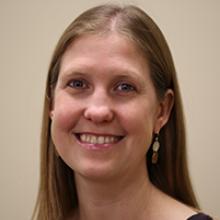Transitional Kindergarten Q&A with Karen Manship
Created in 2010 by the Kindergarten Readiness Act, transitional kindergarten (TK) offers younger children in California additional time to prepare for school. The first year of a two-year kindergarten experience for students of all income levels with birthdays between September and December, TK provides an additional year of early education to thousands of children each year, with the goal of promoting their school readiness.
AIR undertook a five-year evaluation study of the TK program in 2012, comparing students who attended TK before kindergarten to those who went straight into kindergarten without attending a TK program because their birth date made them ineligible.
In January, 2018, the California state legislature introduced a bill to expand the program to gradually include more months of eligibility until the program is available to all four-year-old children in the year before they attend kindergarten. In light of this bill—and conversations across the country about increasing access to high-quality early childhood education—AIR’s Karen Manship, principal researcher and project director, answered a few questions about the TK study and its findings.
Q: What did the TK study find?
The study found that children who participated in California’s TK program had a three- to six-month learning advantage in literacy and math skills when they entered kindergarten, compared to their peers who were not eligible for the program but were very similar in age. We also found, through a survey of their teachers, that students who attended TK were more engaged in learning in kindergarten.
Q: What do TK classrooms look like?
The majority of TK classrooms are full-day, enroll only TK students, and have an average of 20 children. On average, TK students spend most of their instructional time on reading activities, but also spend varying amounts of time learning about other subjects such as art, music, and social studies. Teachers use a balance of whole group, small group, individual, and child-selected activities in their classrooms, with approximately one-third of students’ time spent on child-selected activities, thought to be more developmentally appropriate for young children. The majority of the instruction observed in TK classrooms was didactic, with teachers providing information to students in a less interactive way. Ninety-six percent of TK teachers in the study were prior kindergarten teachers.
Q: What were the impacts on subgroups including low-income students and English learners?
The TK program impacted outcomes for every student subgroup, although some saw larger gains than others. It had a particularly strong and persisting impact on the math skills of low-income students and Hispanic students, meaning that by the end of kindergarten, these students still showed the positive effects of having attended the program even though their peers who didn’t have TK had a year to catch up. TK also gave English learners a large boost in their English language skills.
Q: What do these findings mean for the field?
We hoped to identify particular classroom practices that were effective in TK classrooms, to provide specific guidance to teachers and principals. But, surprisingly, we did not find a relationship between any specific practices thought to be indicators of high quality early childhood programs and the impact of the TK program. We believe that the overall TK classroom experience likely made it effective: credentialed kindergarten teachers, classrooms on the elementary school campus to ease transitions into kindergarten, students from all income levels and backgrounds. We need more research to understand what exactly is driving the program’s effectiveness.
Q: What are the local and state policy implications?
Locally, this study suggests that districts in California not currently offering TK should strongly consider offering it. Statewide, the state legislature is currently considering a bill to expand the program to cover more months of eligibility. This may better prepare even more children for kindergarten and allow kindergarten teachers to introduce more advanced material in kindergarten if more of their students are prepared for it.
Q: What are the research implications of this study?
Given the evidence of TK’s effectiveness at giving students a boost for kindergarten, it may be interesting to study the longer-term impacts of this unique program. We also don’t yet know whether TK would be as effective for younger four-year-olds, so if the program is expanded, more research will be needed to understand how to provide TK in a developmentally appropriate and effective way for younger children.
Read the full report: The Impact of Transitional Kindergarten on California Students.

